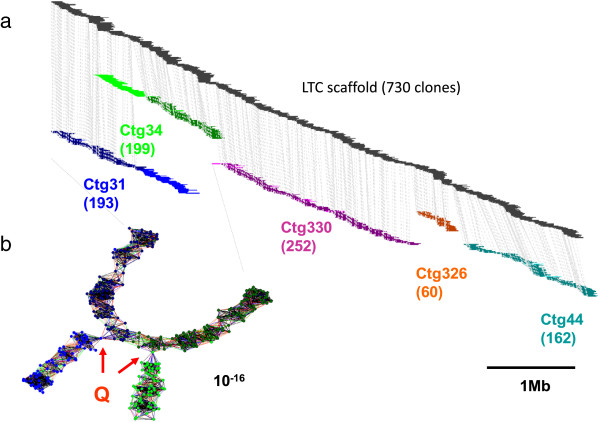Figure 2.

LTC scaffolds produced by end-to-end merging and comparison with FPC contig assembly. (a) The LTC scaffold with 730 clones resulting from a merge of five contigs is shown at the top of the figure as a linear representation. The five FPC contigs that cover the corresponding region are displayed underneath. The gray lines connect to the start points of the corresponding BACs. The blue (Ctg31) and the green (Ctg34) FPC contigs are two examples of false merging of unrelated contigs by Q-clones that were resolved in the LTC scaffold assembly. (b) Network representation of the assembly of contigs Ctg31 (blue) and Ctg34 (green) by LTC. Vertices correspond to clones and edges correspond to significant clone overlaps. It can be seen that the parts of the contigs excluded from the LTC scaffold are connected by only a single Q-clone, while LTC’s assembly is validated by multiple connections that exist between other clones of these two contigs. BAC, bacterial artificial chromosome; FPC, FingerPrinted Contigs; LTC, Linear Topology Contig; Mb, megabase; Q-clone, questionable clone.
